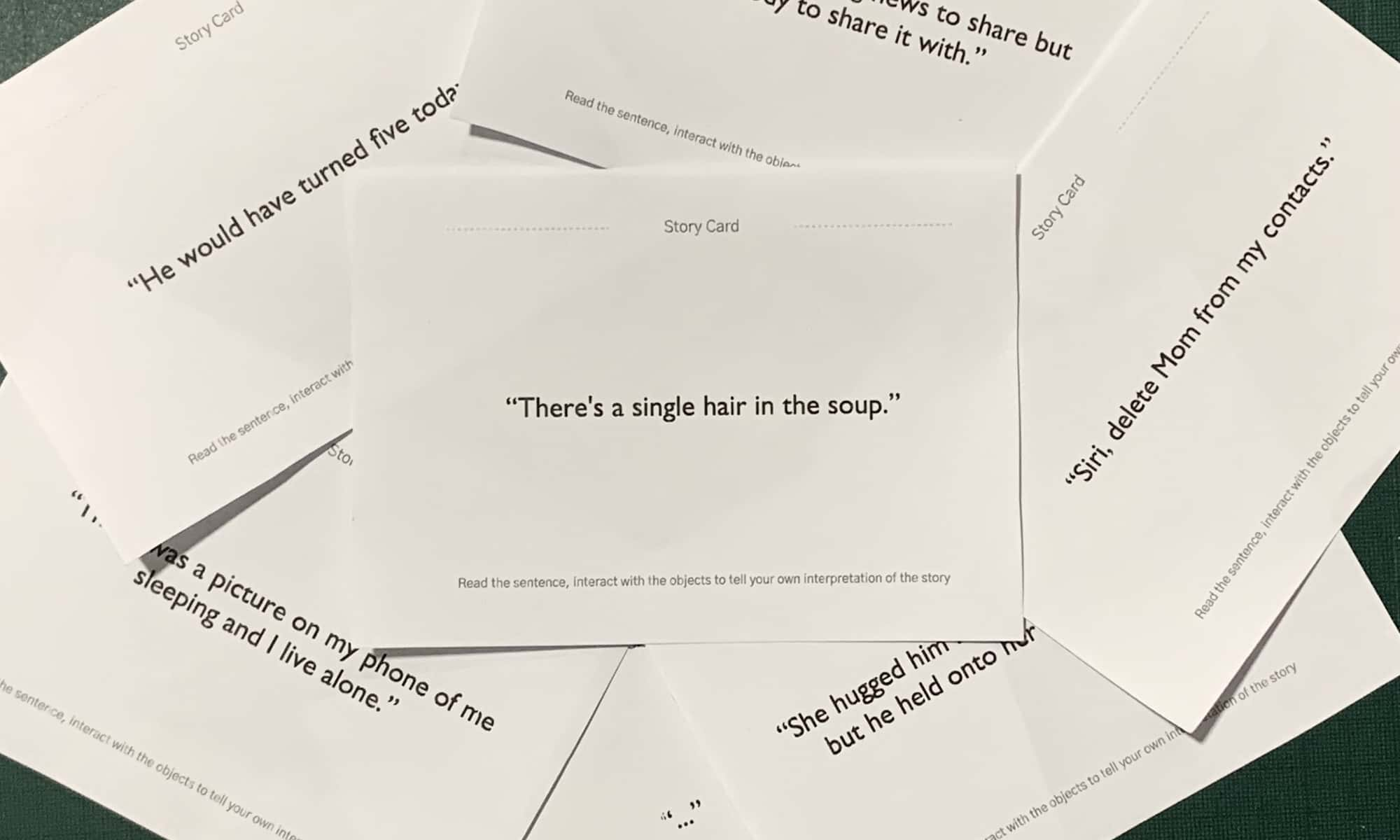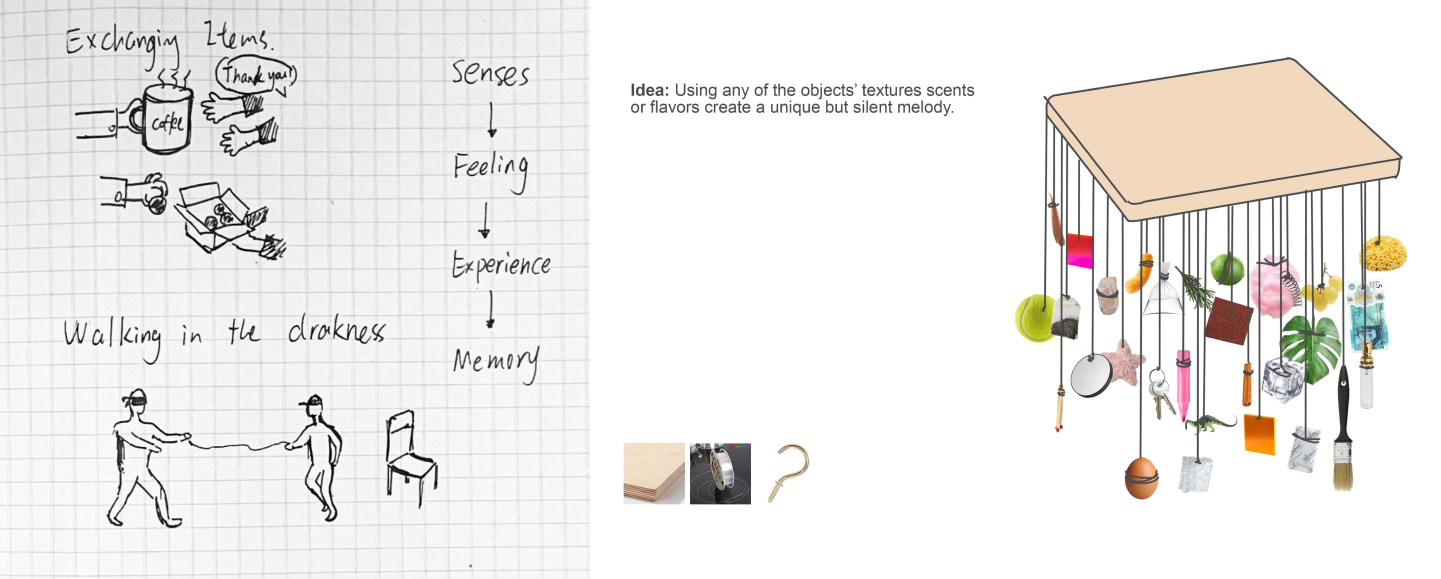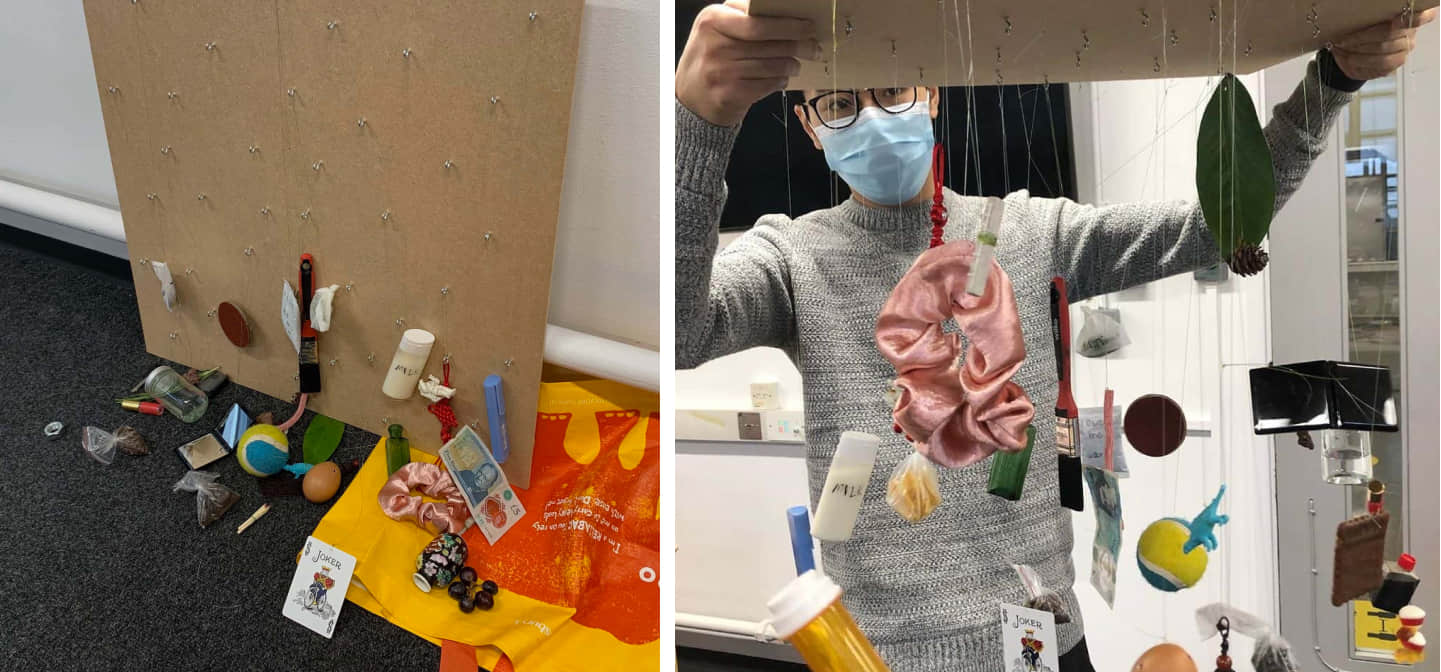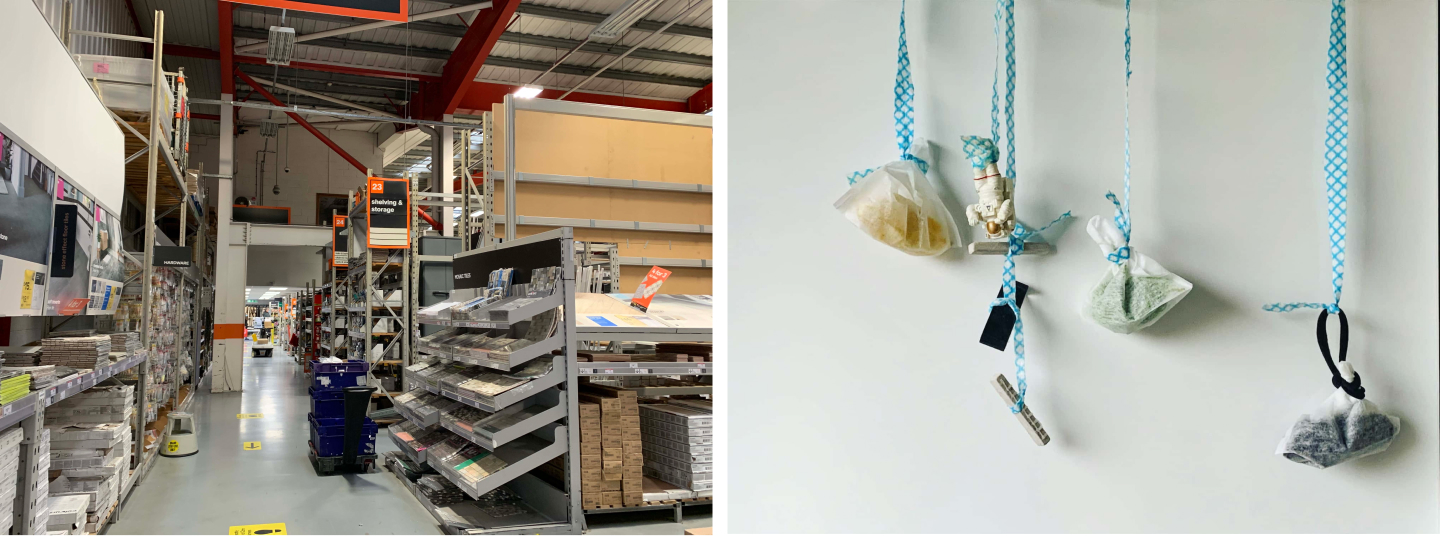
A Non-verbal Story
The UX of Human Senses - part 2
Team: Gabrielle Bennet, Moxue Jia, Jinsong (Sylvester) Liu, Shiwen (Svaney) Shen.
Meeting Point: 51° 30'24.7" N 0° 05'17.5" W
Our field trip to London Bridge resulted in remarkable observations about how we sense the world. Our group met to browse all the documents, sketch out ideas, and try to pick one to proceed.

My concept is to recreate ‘togetherness’ by leading someone walking in the dark with a blindfold, sit at a table, and exchange items with another person. The inspiration comes from feeling the reducing weight of objects when giving away, from alone to accompany. But we all thought this replicating concept is too straight forward.
The second idea ‘silent melody’ from Gab uses hanging items to create rich senses in touch, smell, sight and taste, to synesthesia music.

Silent Melody: a sequence of single notes that is
musicallysatisfying;a tune. – Gab
Tutorial
John asked some inspiring and inexplicable questions. It is an appealing concept, but these random hanging objects need more explanation. What makes them a song? Or, what makes a song a song? He suggested we think about the composer-audience relationship and organise interactions through a clear purpose.
A Non-verbal Story
We agreed to refine the pegboard concept by new interactions and explanation. That was where we come up with the name ‘Non-verbal story’ inspired by the episode ‘Sign Stealing’ from 99% Invisible.
The most important non-verbal communication is between the pitcher and the catcher.
This episode talks about baseball athletes using body language to communicate through a long-distance within seconds. Combines with early ideas of word or sentence cards, we decided to ask audiences to recreate a text-based story using basic senses and beyond1.

Final Presentation
The presentation went well on our physical class on Thursday. After explaining the concept with an example, Alex volunteered to manipulate the pegboard and successfully create a story within minutes.

The most enjoyable part for me is to have Alex played with objects and articulate the story in his mind. As a non-native English speaker, I worried if people could complete a scene. But imagination and creativity are more vital than the language in this case. John also considered it as a new way of creative writing. It reminds me of the mood board tool, but designers can involve more sensory than just visual expression.
It is a fresh start for our MA UX programme with humour, curiosity, and that ‘everything is messy but connected’. Next week we’ll move on to the Skin Project.
-
Stenberg, L. (2003). How Many Senses Do We have? [online] Sensorytrust.org.uk. Available at: https://www.sensorytrust.org.uk/information/articles/senses.html [Accessed 31 Oct. 2020]. ↩
